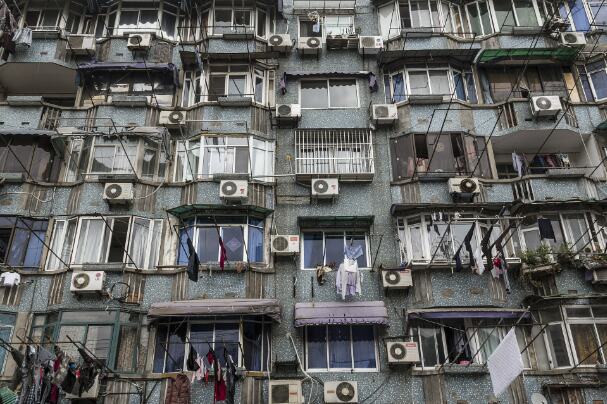A strong move
Ratifying a global pact to phase-down potent greenhouse gases places India on a firm footing ahead of the UN climate negotiations in November

The Union Cabinet in August decided to ratify the Kigali Amendment to the Montreal Protocol, a move that provides a significant impetus to climate action. In line with the international agreement, India will phase-down the production and consumption of hydrofluorocarbons (HFCs), a potent greenhouse gas that leads to further global warming.
The Kigali Amendment aims to reduce HFC emissions by over 80 per cent by 2047. This will restrain global temperature increase by up to 0.5 degrees Celsius by the end of the century. After a tremendous growth in the use of HFCs in the refrigeration and air-conditioning industries, countries that are parties to the 1989 Montreal Protocol agreed at an October 2016 meeting held in the Rwandan capital of Kigali to add HFCs to the list of controlled substances. They also agreed to a timeline for their gradual reduction by 80 per cent by the late 2040s.
This could potentially prevent the release of as much as 105 billion tons of climate-changing emissions by 2050. It would be enough to take the world a quarter of the way towards achieving the two-degrees Celsius global-warming target set by the December 2015 Paris Agreement. However, reducing demand for refrigerants and mechanical cooling presents a difficult challenge in a rapidly warming world.
The Union Cabinet, chaired by Prime Minister Narendra Modi, went beyond the ratification of the Kigali Amendment by also announcing that the country will formulate a national strategy for the HFC phase-down by 2023 after consulting all industry stakeholders. It will modify existing laws and regulations to align with the global agreement.
This is not the first time that India has taken proactive initiative to reduce emissions that emanate from cooling efforts. In an unusual move in January last year, the Central government instructed makers of room air-conditioners to ensure a default temperature setting of 24 degrees Celsius instead of 20-21 degrees. It also asked all commercial buildings to maintain air conditioning at that level. This one measure alone has the potential to cut energy consumption in homes by a quarter and by 20 per cent for businesses in the nation, according to the International Energy Agency.
Cooling devices like refrigerators and air-conditioners are becoming increasingly common, but fossil fuels burnt to power these machines will add to the effects of climate change, according to the Cooling Emissions and Policy Synthesis Report. The essential nature of cooling services is underlined by the Covid-19 pandemic, as temperature-sensitive vaccines will require quick deployment around the globe. However, increasing demand for cooling is contributing massively to climate change by emitting large amounts of planet-warming HFCs, carbon dioxide and black carbon from the mostly fossil fuel-based energy used to power cooling devices.
India had also announced a national cooling action plan in March 2019, becoming the first nation to produce such a document under the umbrella of the Montreal Protocol. The environment ministry has set four main goals in the proposed action plan — reduce cooling demand by 20-25 per cent by 2037-38; reduce refrigerant demand by 25-30 per cent; reduce cooling energy requirements by 25-40 per cent by 2037-38; and train and certify 1,00,000 servicing technicians by 2022-23.
India's latest move to ratify the Kigali Amendment is therefore significant in the global arena. It proves the country's willingness to take strong climate action. Nations must deliver massive cuts in their greenhouse gas emissions to get on track to limit global temperature rise this century to 1.5 degrees Celsius, as recommended by scientists.
The environment ministry has said that there would be scope for domestic manufacturing of equipment as well as alternative non-HFC and other chemicals with low-global warming potential to enable the industry to transition. In addition, there would be opportunities to promote domestic innovation for new generation alternative refrigerants and related technologies.
This action by the Indian government also provides it with ammunition to negotiate at the United Nations climate summit to be held in Glasgow in November, where countries across the world are expected to promise stronger action to rein in climate change. India is often criticised for its dependence on coal-fired electricity. But its participation in the Kigali Amendment will reduce its greenhouse gas emission that is equal to closing a sixth of its thermal power plants over 35 years, according to an analysis by IndiaSpend, a data-analysis platform.
India can also take heart from the fact that it is one of the few countries whose actions are compatible with keeping global warming below two degrees Celsius by the end of the century, according to Climate Action Tracker. There is, however, little room for complacency. The latest report by the Intergovernmental Panel on Climate Change, the world's largest group of climate experts, global average temperatures have already risen by about 1.1 degrees Celsius compared with pre-industrial times.
India is the third-largest emitter of greenhouse gases, after China and the United States. It does have a responsibility to take stringent action so that our planet does not become unliveable. Its commitment to phase-down HFCs is a step in the right direction but more needs to be done.
Views expressed are personal



